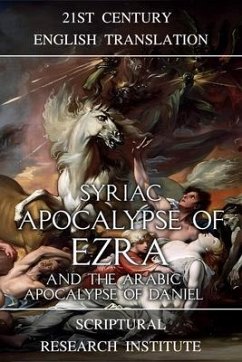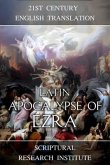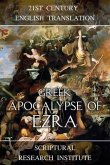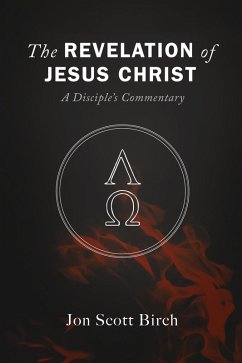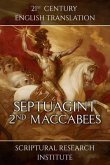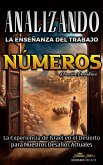The Syriac Apocalypse of Ezra, sometimes called the Revelation of Ezra appears to have been reworked in the High Middle Ages. Another version of the apocalypse has survived in Arabic, but attributed to Daniel not Ezra, commonly known as the Arabic Apocalypse of Daniel. The Arabic version is shorter and appears to be older, likely dating to earlier than the time of Muhammad, while the Syriac version has been reworked into an anti-Islamic apocalypse, likely between 1229 and 1244. The apocalypse includes a reference from the High Middle Ages to Muslims as Ishmaelites, and Mongols as Gog and Magog, forming an alliance and conquering Jerusalem. This idea would not have been conceivable until the Mongols defeated the Khwarazmian Empire, an Islamic Turko-Persian empire in Iran and Central Asia. Before that, the idea that the Mongols could reach Jerusalem was not a consideration. The Apocalypse indicates that the city of Jerusalem was occupied by Christians at the time, which would place the anti-Islamic redaction to sometime between 1229 and 1244. The Latin crusaders had been driven out of Jerusalem in 1187, however, the kingdom of Jerusalem continued to exist, first from its capital in Tyre, and later Acre, however, in 1229 Jerusalem was recaptured, and held until 1244. As the Principality of Antioch was another crusader state to the north, and the name 'Antioch' appears to have been added earlier in the Apocalypse, the redactor may have meant it as a piece of propaganda intended to garner support from Byzantine Christians, who had not generally participated in the crusades and had better relations with the Muslims than the Catholics.
The older Arabic version of the apocalypse likewise appears to have been used for propaganda, however, was anti-Jewish instead of anti-Islamic, and appears to have been written in Aramaic before the time of Muhammad. Based on the dialect of Arabic, it most likely originated in Palestine, among medieval Christians. The Arabic version is much shorter and is mostly paraphrased from the Gospels and other early Christian works, however, the content of the apocalypse is clearly something that was incorporated into the longer Syriac Apocalypse. While the content of the Arabic apocalypse is repeated in the Syriac apocalypse, it is a direct translation, but a series of paraphases that are reinterpreted in an anti-Islamic way.
The longer Syriac apocalypse, which must originate much later than the pre-Islamic Arabic apocalypse, nevertheless, has much more content, most of which appears to have been composed in Neo-Babylonian sometime between 597 and 592 BC. The Syriac apocalypse has many Greek loanwords, confirming it was written in Greek, as well as an Arabic word the Syriac translator chose over a Syriac word, suggesting the Syriac translation was done long after Northern Iraq became Arabic speaking. All known copies of the Syriac Apocalypse can be traced to Iraqi Kurdistan, or the old Christian churches of Mosul, just south of Kurdistan. All of the surviving manuscripts are also in the Eastern Syriac script, and ten of the known 15 manuscripts can be linked to the Rabban Hormizd Monastery, of the Chaldean Catholic church, suggesting that all known copies are derived from the texts maintained at the monastery.
The oldest known manuscript is from 1702 and is known as MS Mingana Syriac 11, or simplified to Mingana 11. It was copied on January 16, 1702, by a Hoshabo, son of Daniel, son of Joseph the priest, son of Hoshabo, and bought by Alphonse Mingana in the 1920s. Minanga was a British orientalist who had been born in Ottoman Kurdistan, and in the 1920s made multiple trips to northern Iraq to acquire ancient manuscripts, which later became the Mingana Collection at the University of Birmingham, in England.
The older Arabic version of the apocalypse likewise appears to have been used for propaganda, however, was anti-Jewish instead of anti-Islamic, and appears to have been written in Aramaic before the time of Muhammad. Based on the dialect of Arabic, it most likely originated in Palestine, among medieval Christians. The Arabic version is much shorter and is mostly paraphrased from the Gospels and other early Christian works, however, the content of the apocalypse is clearly something that was incorporated into the longer Syriac Apocalypse. While the content of the Arabic apocalypse is repeated in the Syriac apocalypse, it is a direct translation, but a series of paraphases that are reinterpreted in an anti-Islamic way.
The longer Syriac apocalypse, which must originate much later than the pre-Islamic Arabic apocalypse, nevertheless, has much more content, most of which appears to have been composed in Neo-Babylonian sometime between 597 and 592 BC. The Syriac apocalypse has many Greek loanwords, confirming it was written in Greek, as well as an Arabic word the Syriac translator chose over a Syriac word, suggesting the Syriac translation was done long after Northern Iraq became Arabic speaking. All known copies of the Syriac Apocalypse can be traced to Iraqi Kurdistan, or the old Christian churches of Mosul, just south of Kurdistan. All of the surviving manuscripts are also in the Eastern Syriac script, and ten of the known 15 manuscripts can be linked to the Rabban Hormizd Monastery, of the Chaldean Catholic church, suggesting that all known copies are derived from the texts maintained at the monastery.
The oldest known manuscript is from 1702 and is known as MS Mingana Syriac 11, or simplified to Mingana 11. It was copied on January 16, 1702, by a Hoshabo, son of Daniel, son of Joseph the priest, son of Hoshabo, and bought by Alphonse Mingana in the 1920s. Minanga was a British orientalist who had been born in Ottoman Kurdistan, and in the 1920s made multiple trips to northern Iraq to acquire ancient manuscripts, which later became the Mingana Collection at the University of Birmingham, in England.
Dieser Download kann aus rechtlichen Gründen nur mit Rechnungsadresse in A, D ausgeliefert werden.

